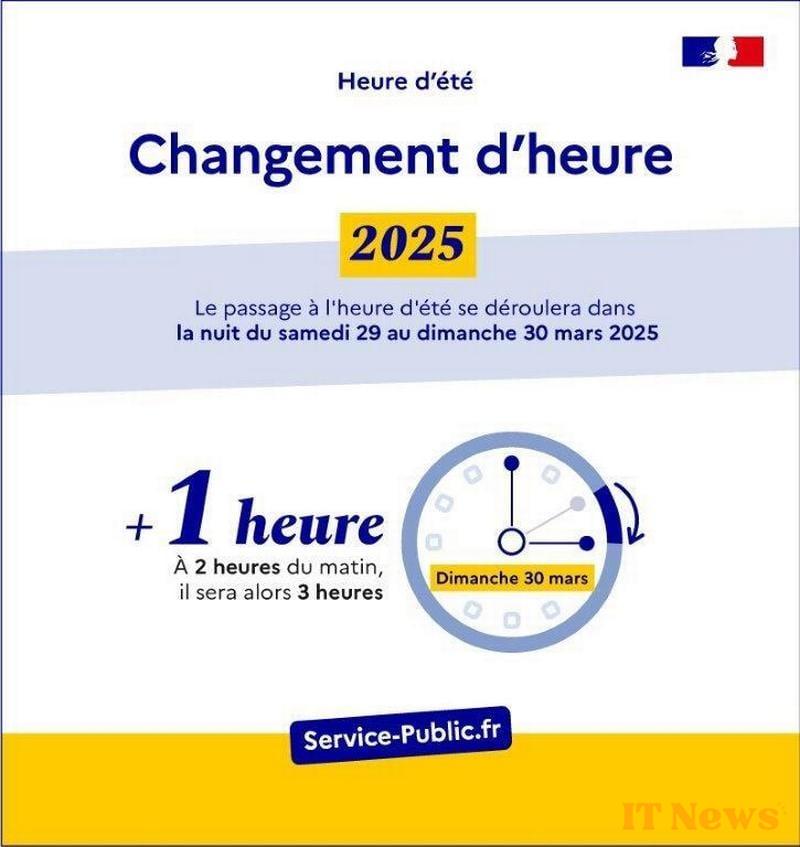Although our smartphones, computers, and tablets automatically change the time, our watches and clocks will have to do it manually. The time change will take place again this year, on Sunday, March 30, 2025, at 2 a.m. You will need to add 60 minutes to standard time. It will then be 3 hours instead of 2 hours. Unfortunately, it won't be the last! But do you know why? And do you know the origin of these time changes as winter and summer approach?
1916: the introduction of the first time change in France
The change to summer time was first introduced during the First World War, in an effort to save energy. European countries began adopting daylight saving time in 1916, setting clocks forward one hour in the summer to take advantage of natural light for longer in the evenings and thus reduce energy consumption.
Daylight saving time was officially introduced in France in 1976 following a rise in oil prices, and since then, many other countries around the world have adopted the practice, although the exact dates of the time change vary from country to country. In the United States, daylight saving time was introduced in 1918 but was abolished after the war, then reinstated during World War II and finally made permanent in 1966. It was not until 1998 that Europe introduced this time change on a large scale.
Was the expected objective achieved?
An interesting study conducted in 2010 by Ademe, the French Environment and Energy Management Agency, shows that these time changes in 2009, the reference year of the study, saved 440 GWh, which represents the annual consumption of 800,000 households. This result is also accompanied by a reduction of 44,000 tons of CO2 emissions, still in 2009. According to calculations made by Ademe, this time change, if still active in 2030, could reduce CO2 emissions by 110,000 tons.
But was this perceived in the same way by the population? No, some people have been campaigning for years to stop the time change in France, as in Europe. The impact of this time change is not as beneficial for human beings, with more or less significant disruptions and an increase in road accidents.
This hit the mark at the Council of the European Union, which had planned the end of the time change for 2019 after a favorable vote by the European Parliament. European countries were therefore responsible for choosing a definitive time, winter time or summer time. However, this would cause logistical problems between a country that uses summer time and its neighbor that uses winter time. It would seem logical for all European countries to have a single time.
The European Affairs Committee of the National Assembly interviewed several French people to find out their opinions on these time changes. This survey shows that 83.71% of the French population, compared to 16.29%, want to see the end of the time change. A second question asked during the survey shows more divergence. Indeed, 59.17% of people want to keep summer time, compared to 36.97% who want to keep winter time.
However, the COVID-19 pandemic has come along, putting a stop to many projects, including this time change. Consequently, on the night of March 29 to 30, we will switch to summer time.
Last time change? No, we will move forward one hour on the night of Saturday to Sunday.
Before all the countries of the European Union agree, a lot of ink will have been spilled on paper, or water under the bridge. Therefore, you will have to put your clocks forward by one hour on the night of March 29 to 30, 2025. This means that on Sunday, at 2 a.m., it will actually be 3 a.m., or “one hour less under the covers”!
We invite you to join us on the night of Saturday, October 25 to Sunday, October 26, 2025, to set our clocks back one hour to enter winter time.




0 Comments